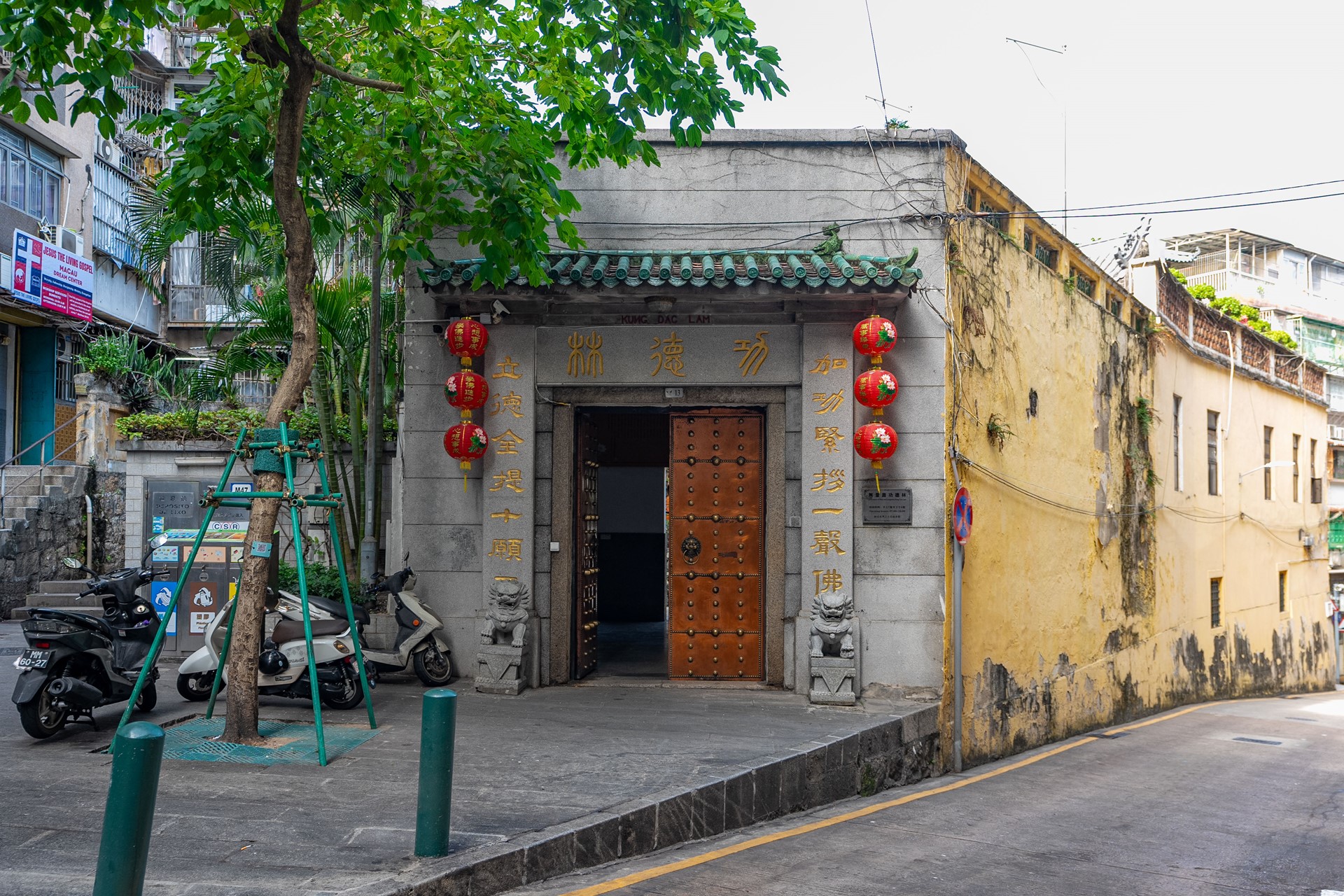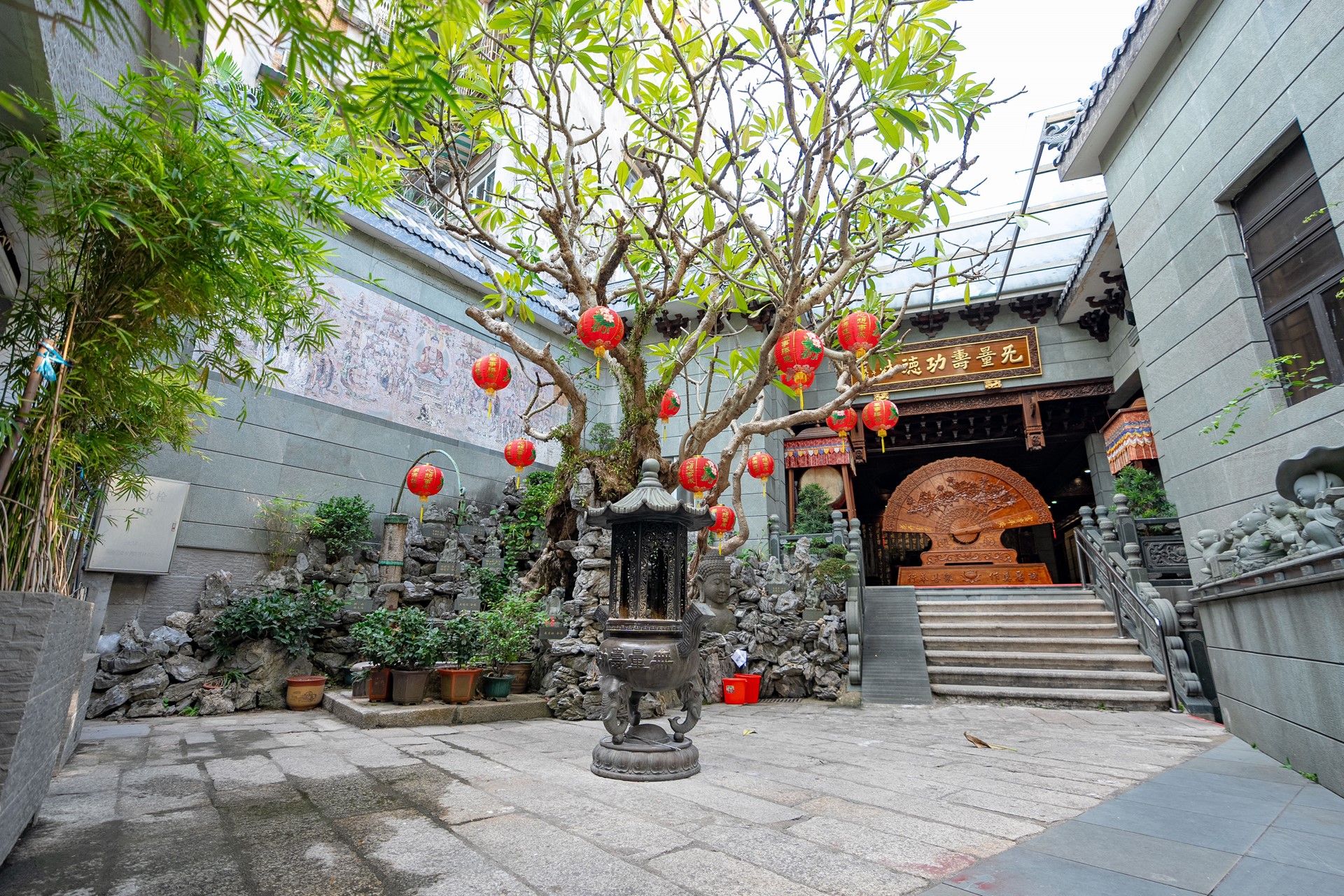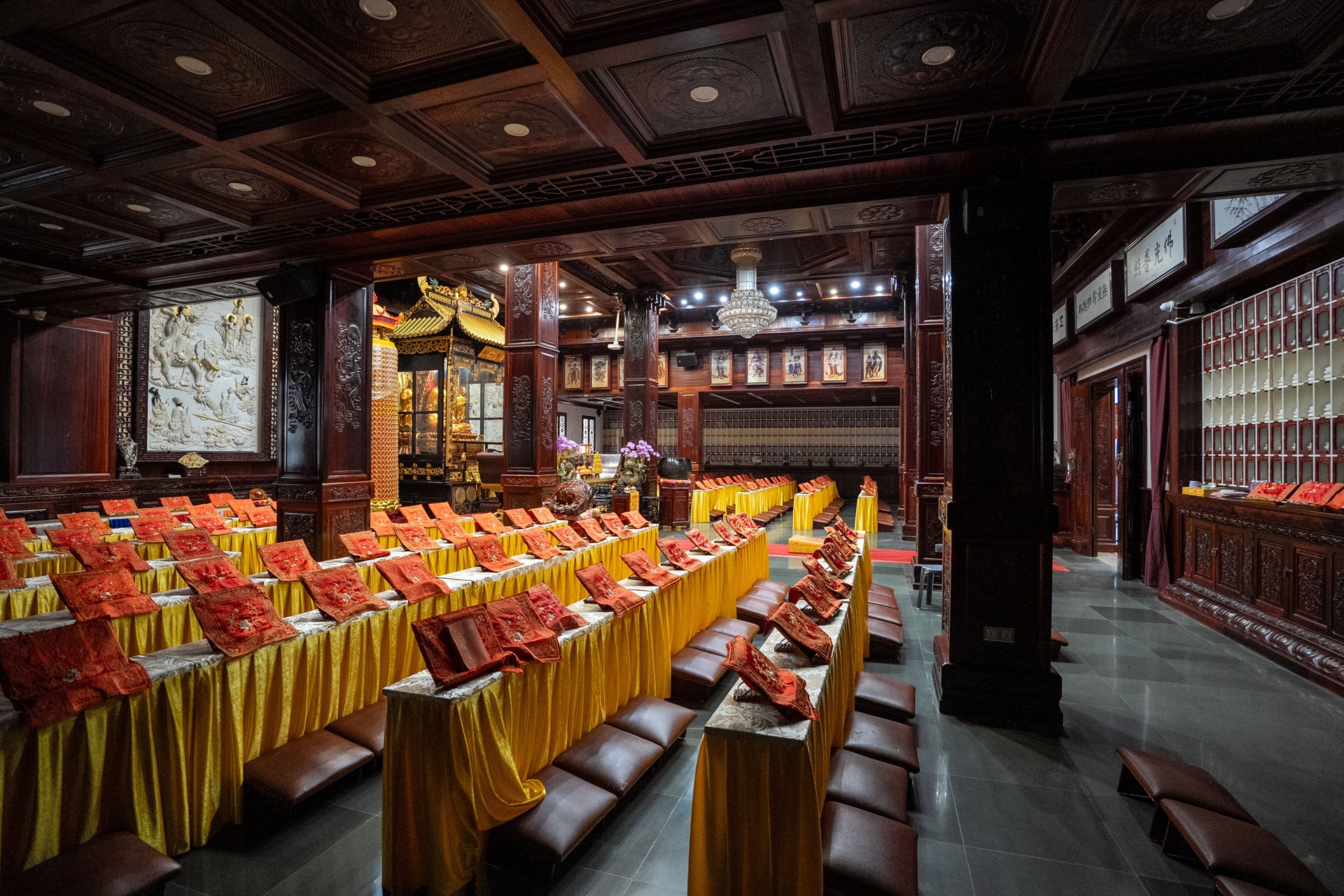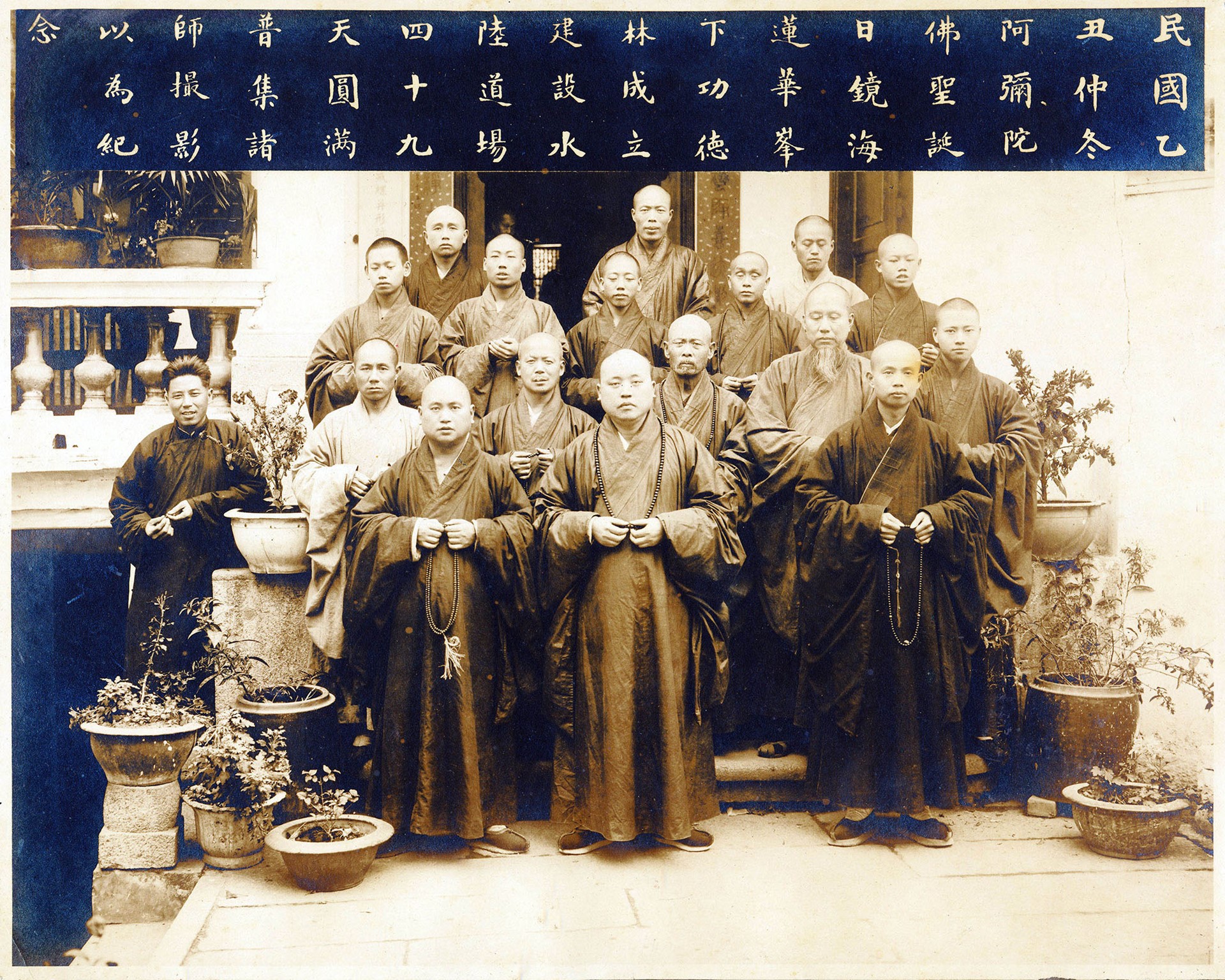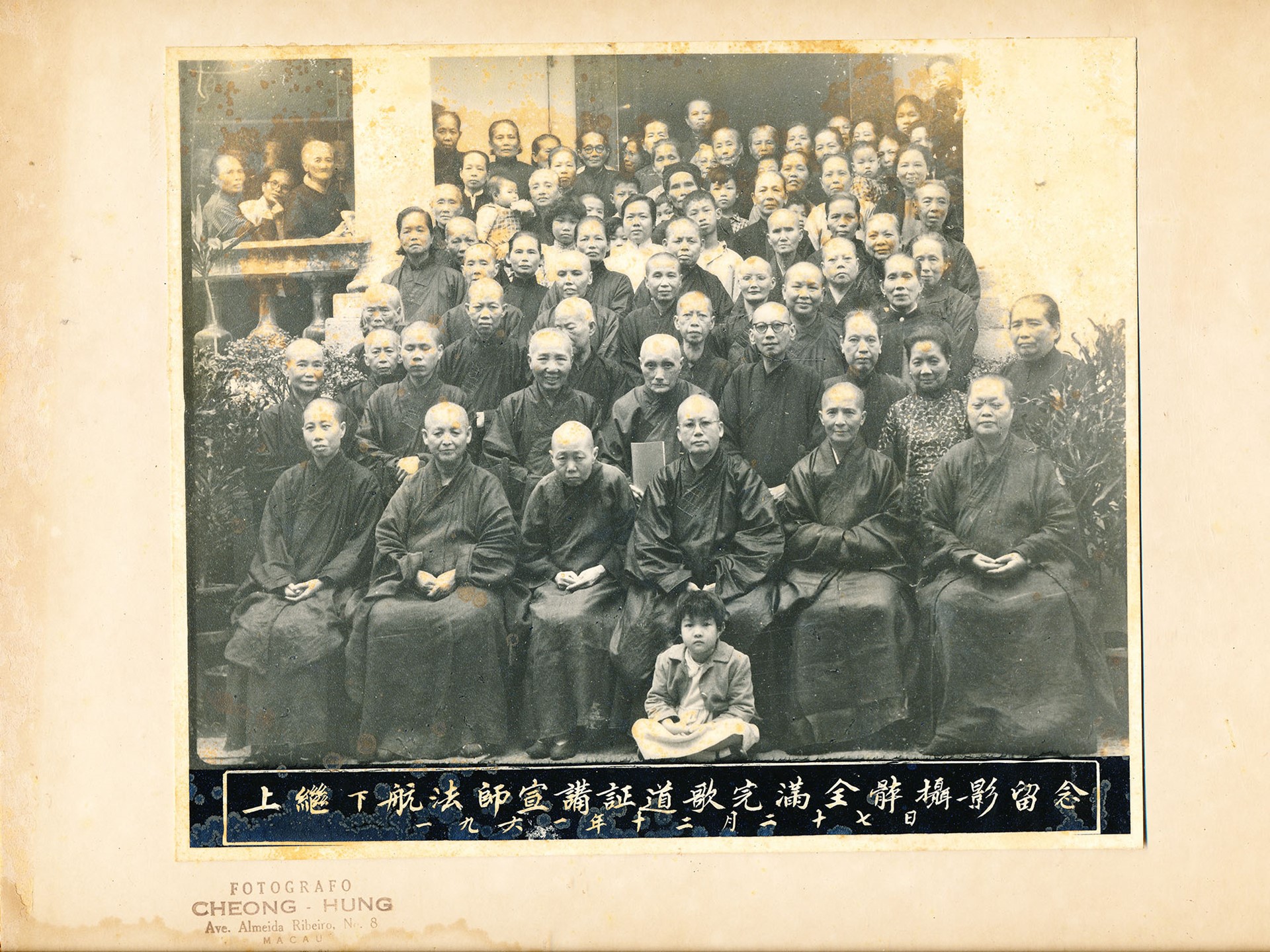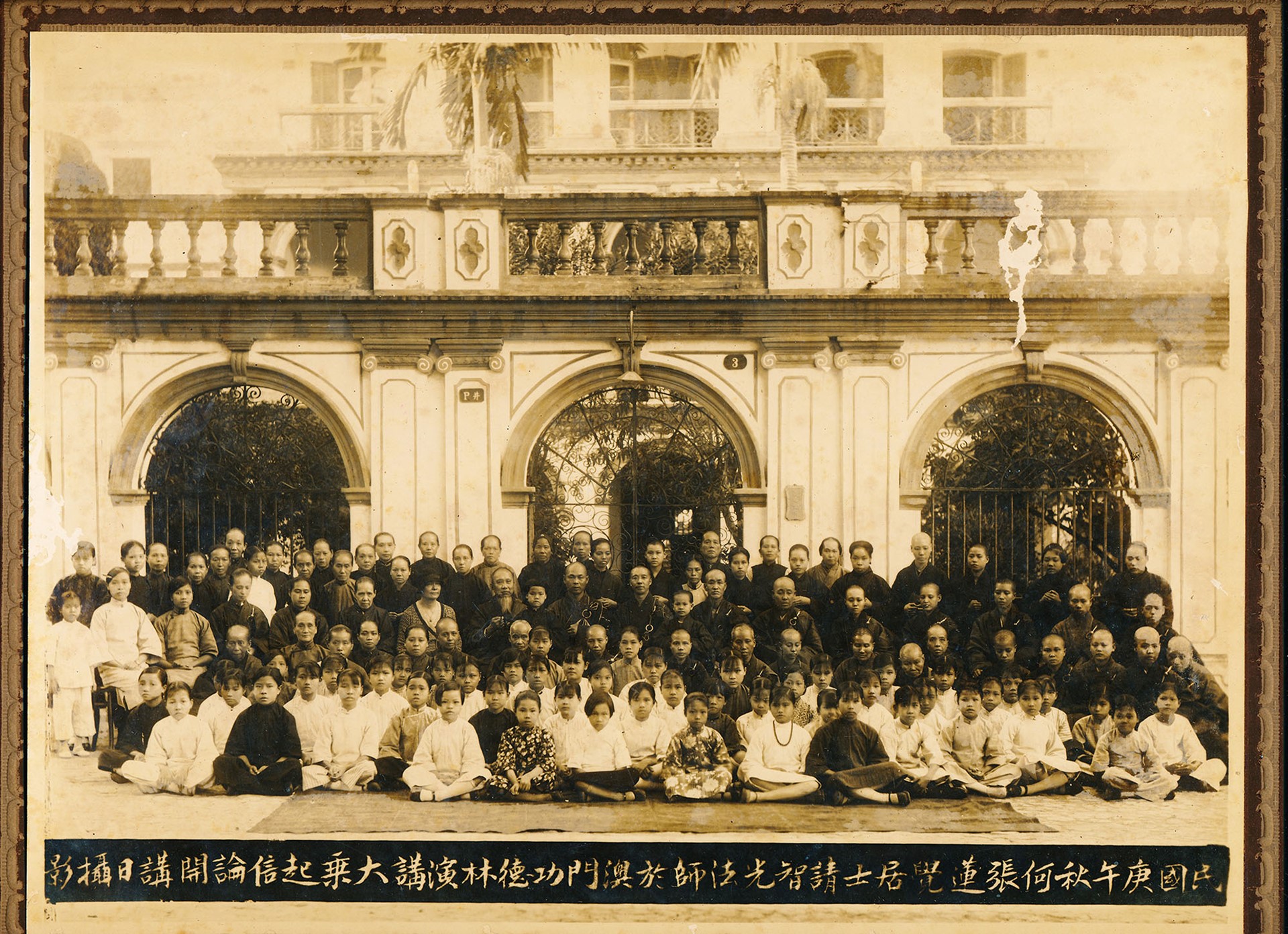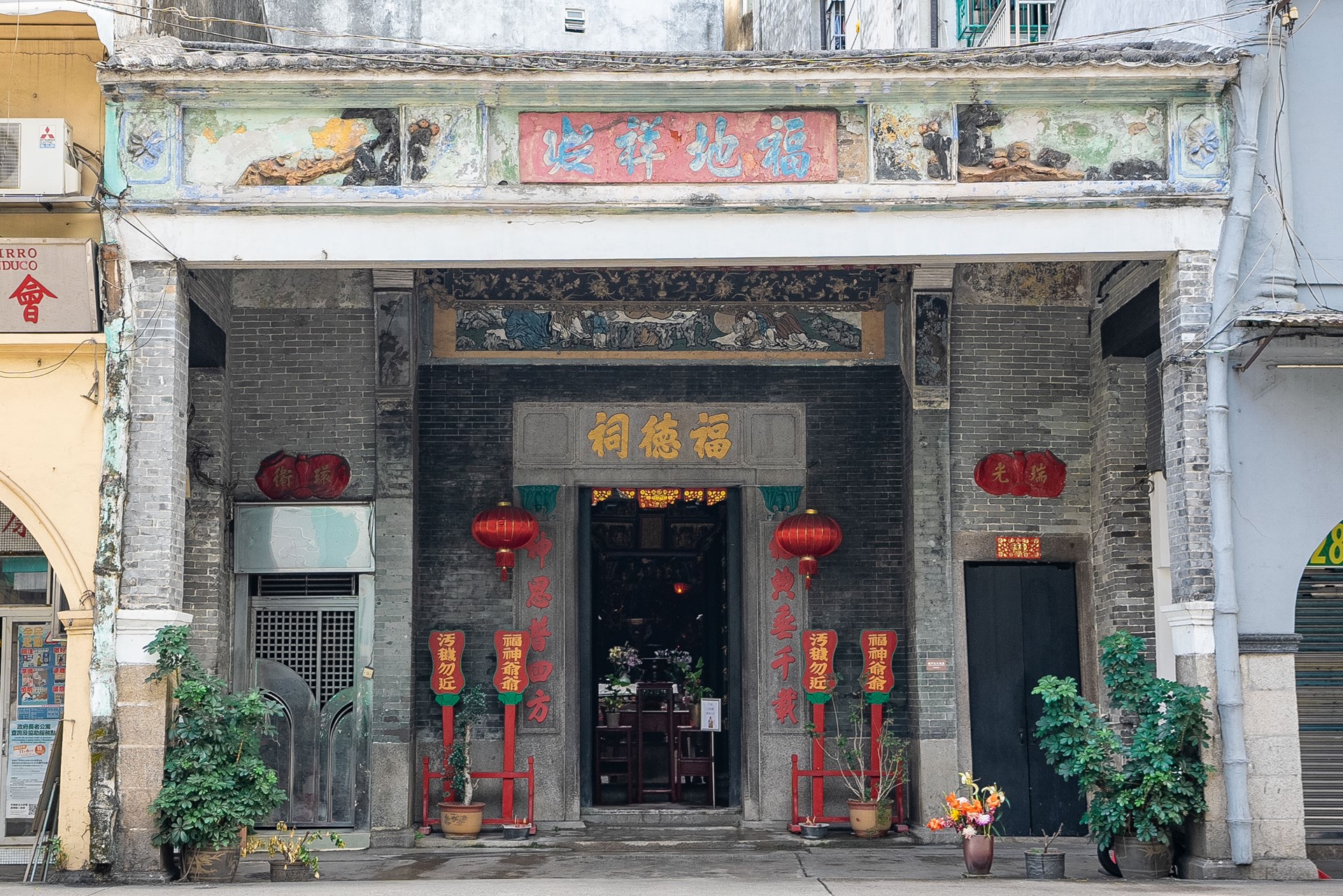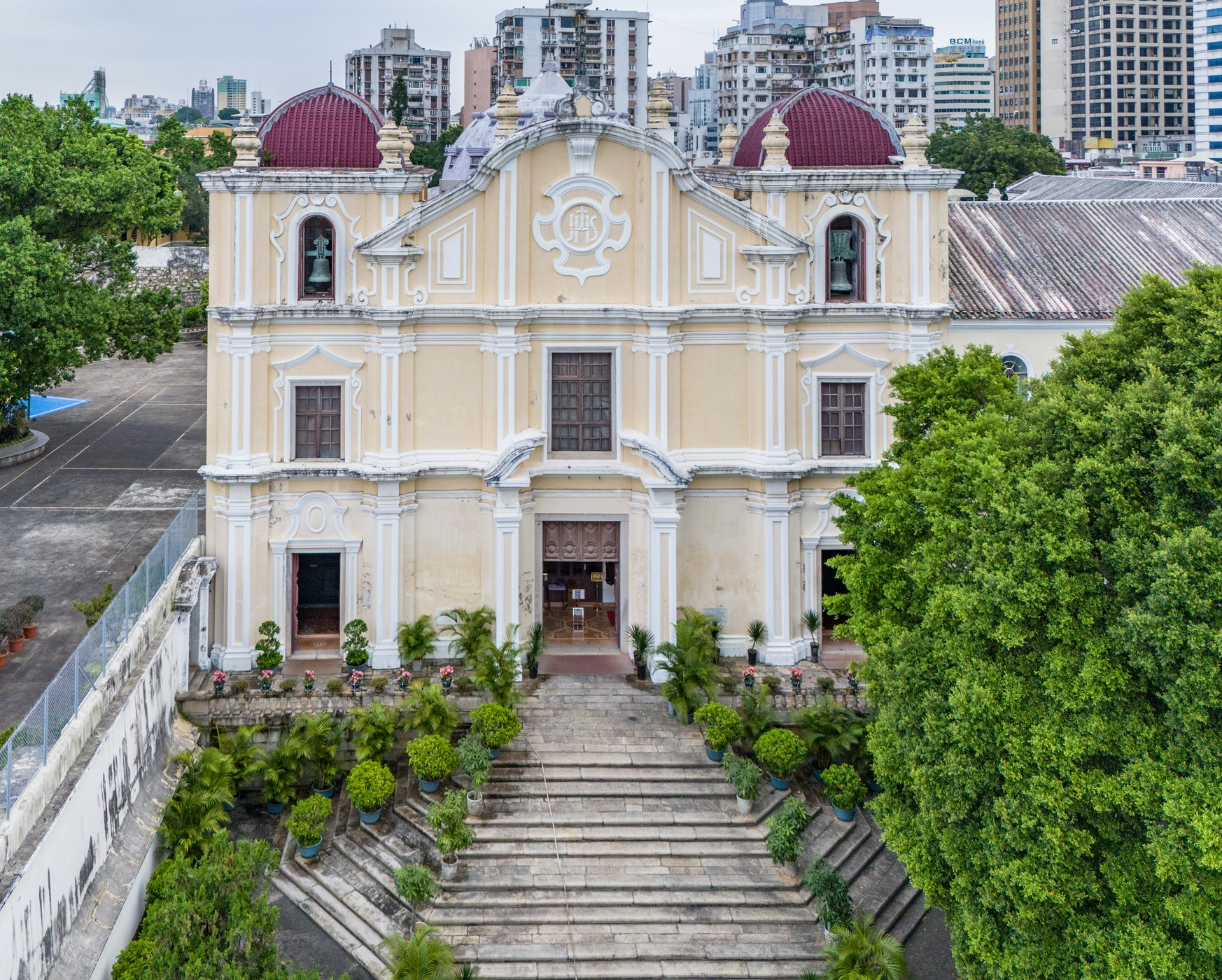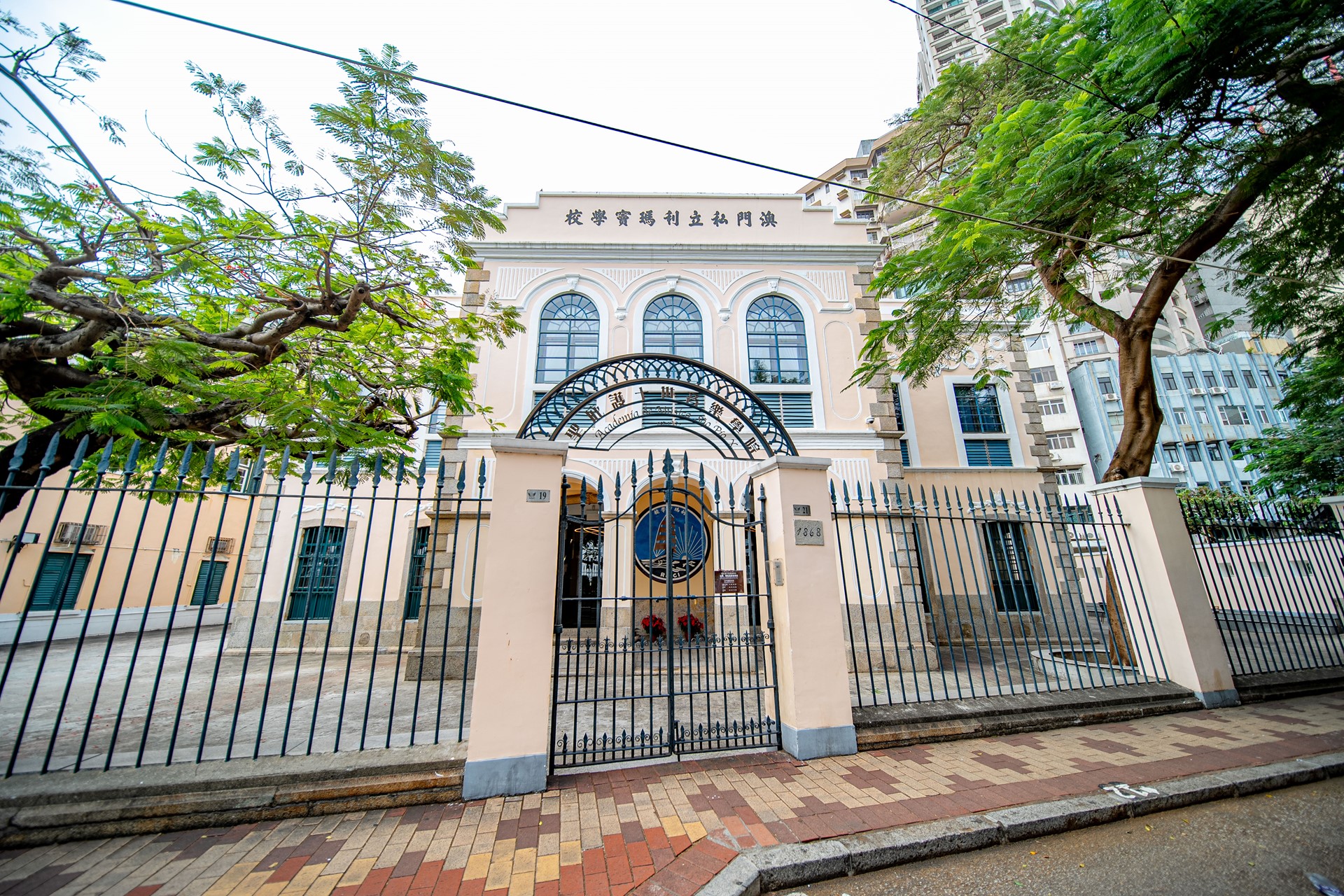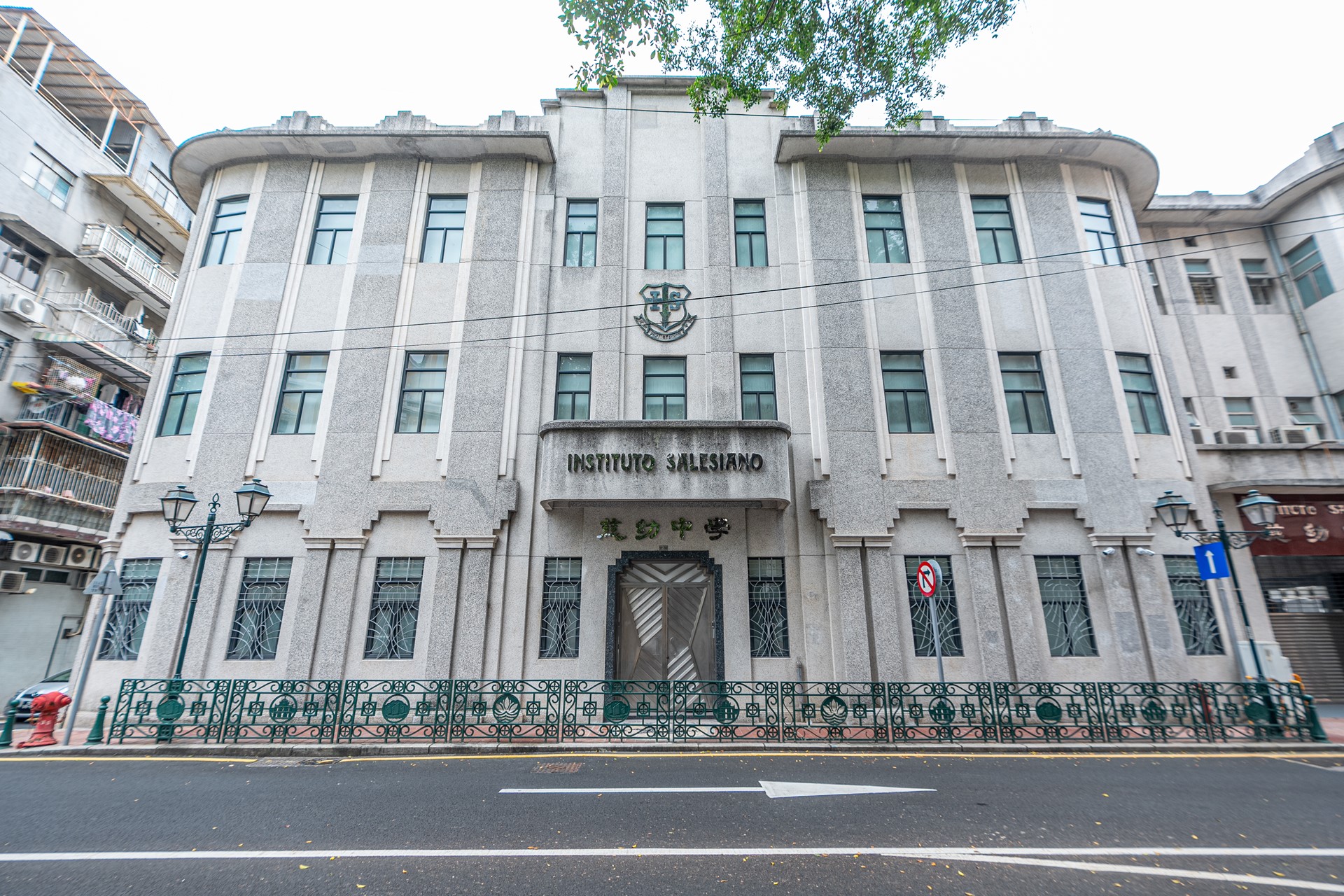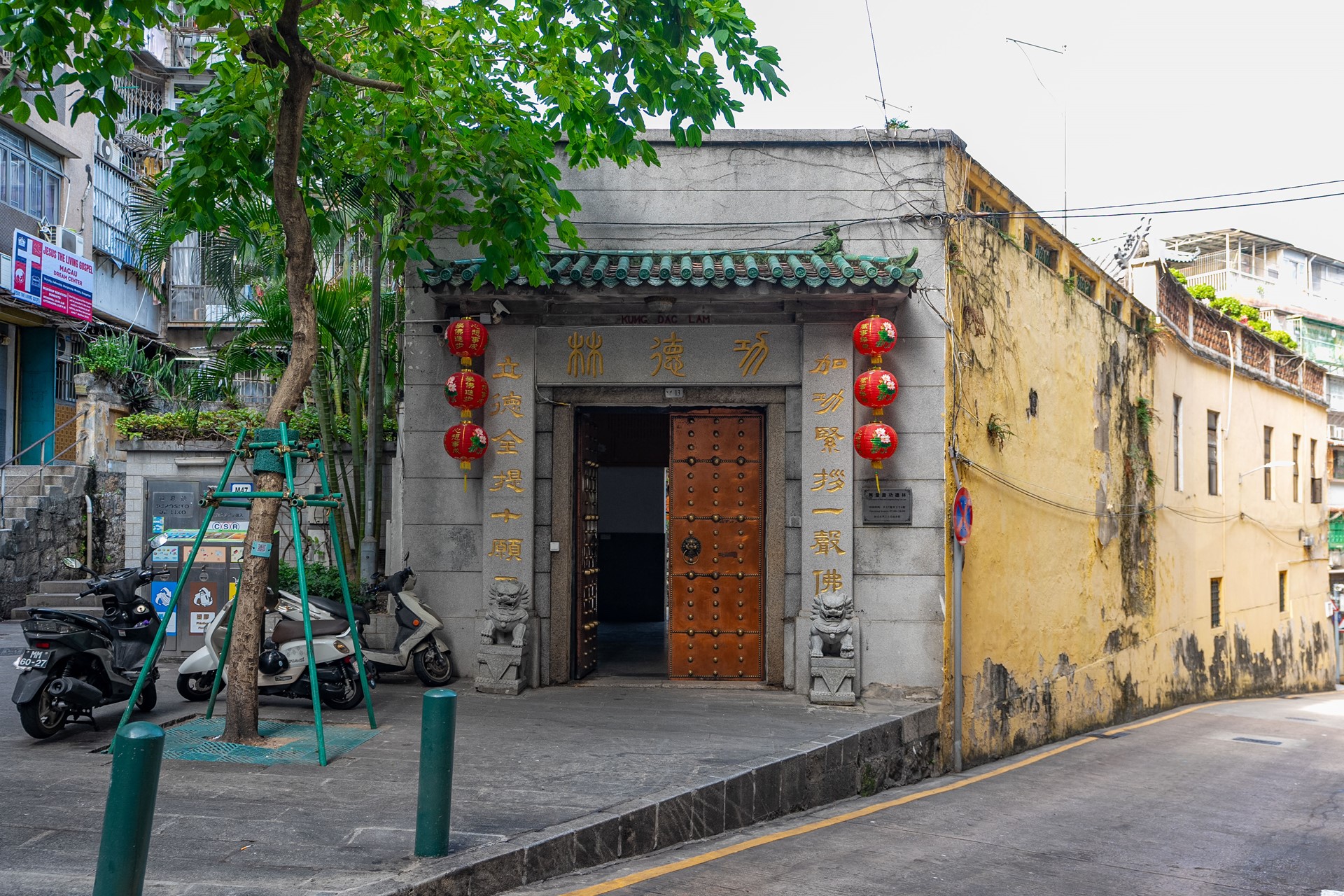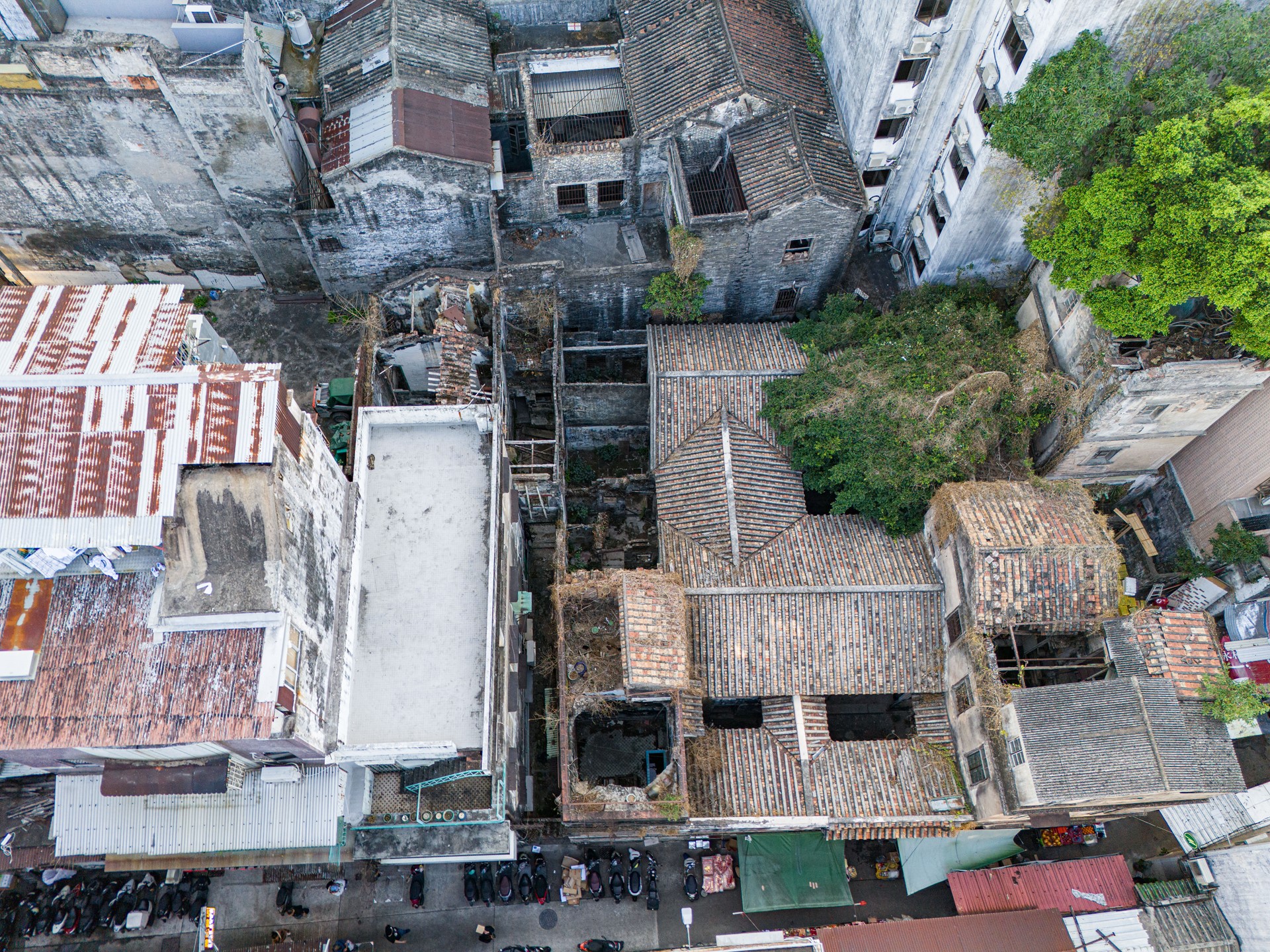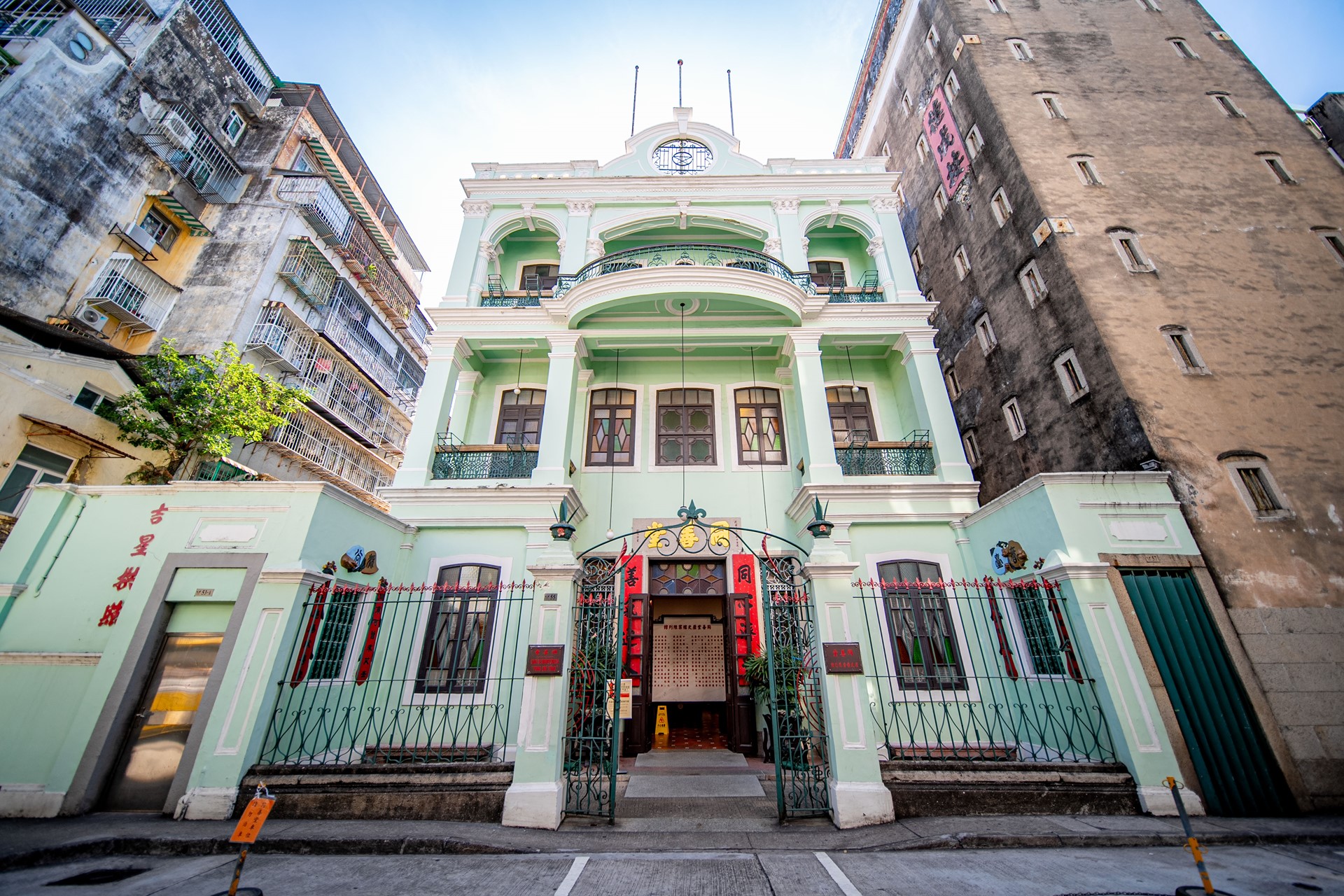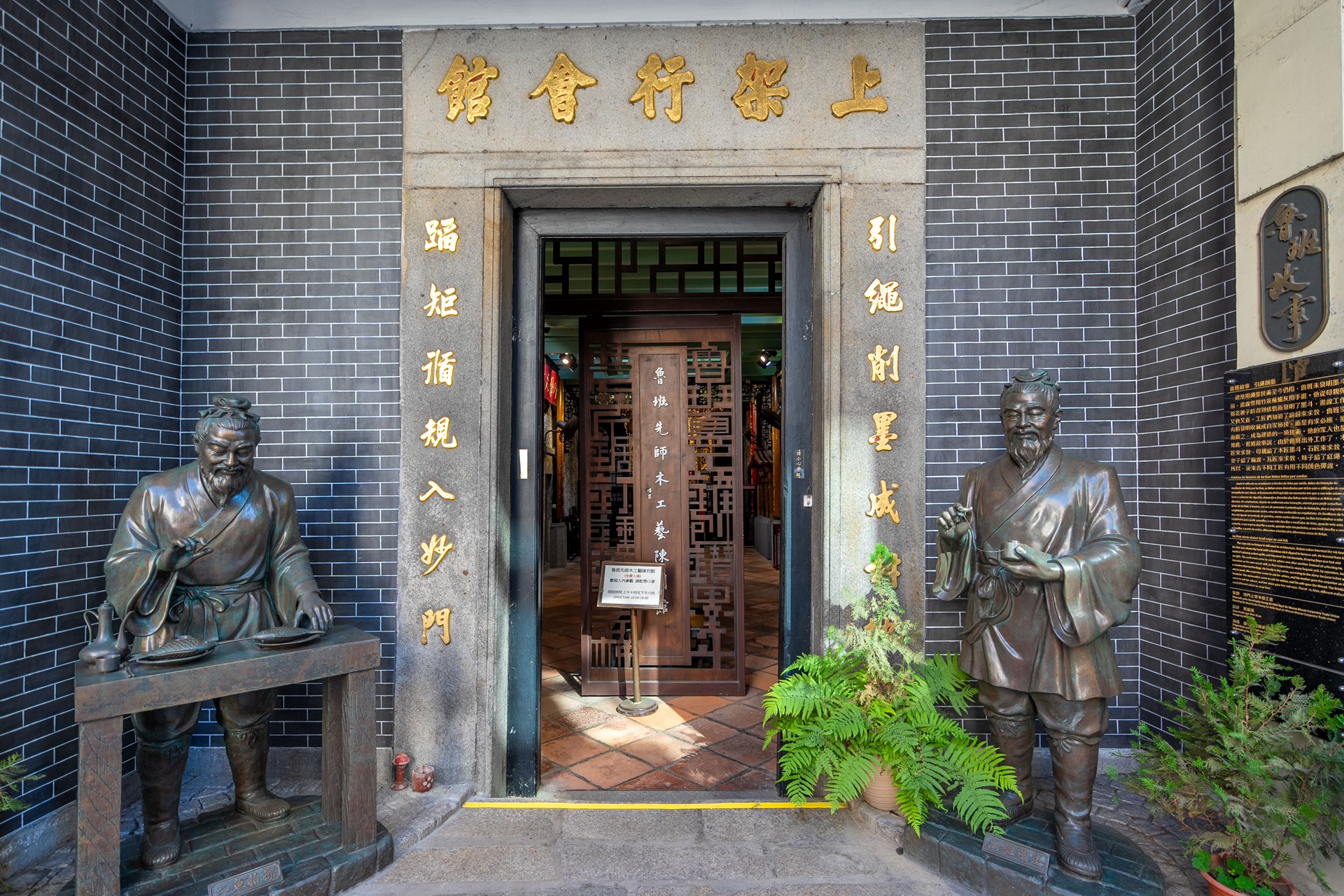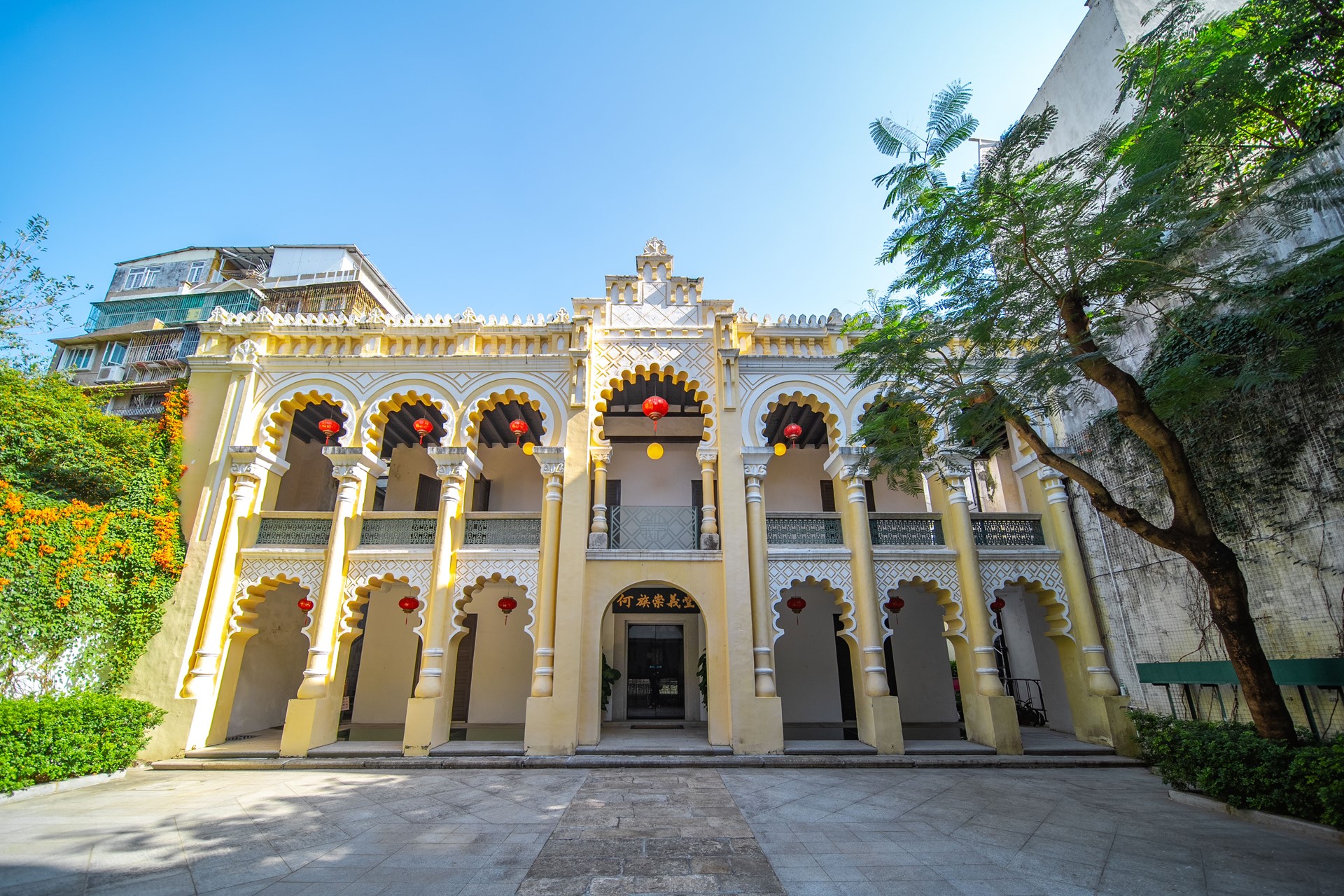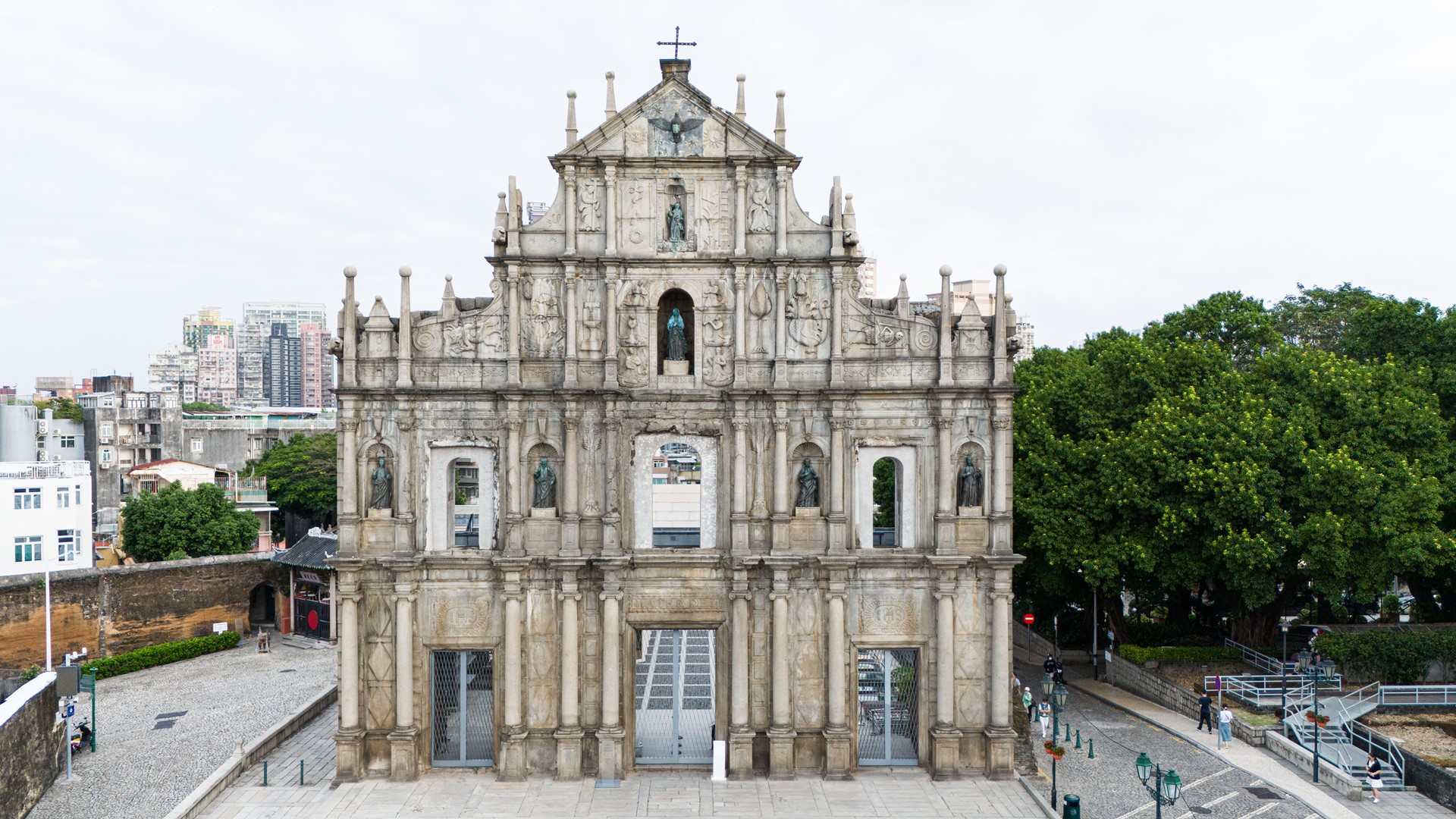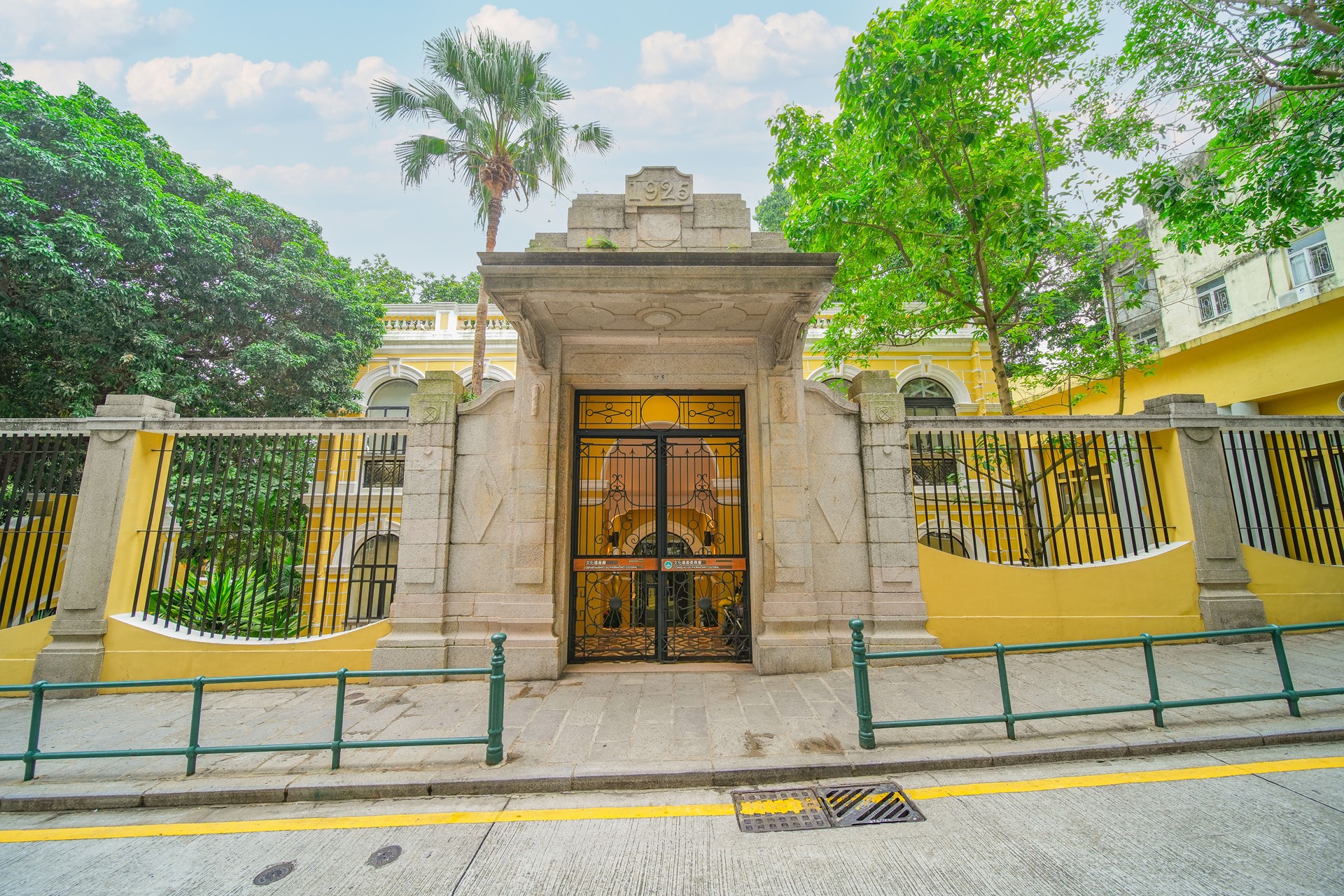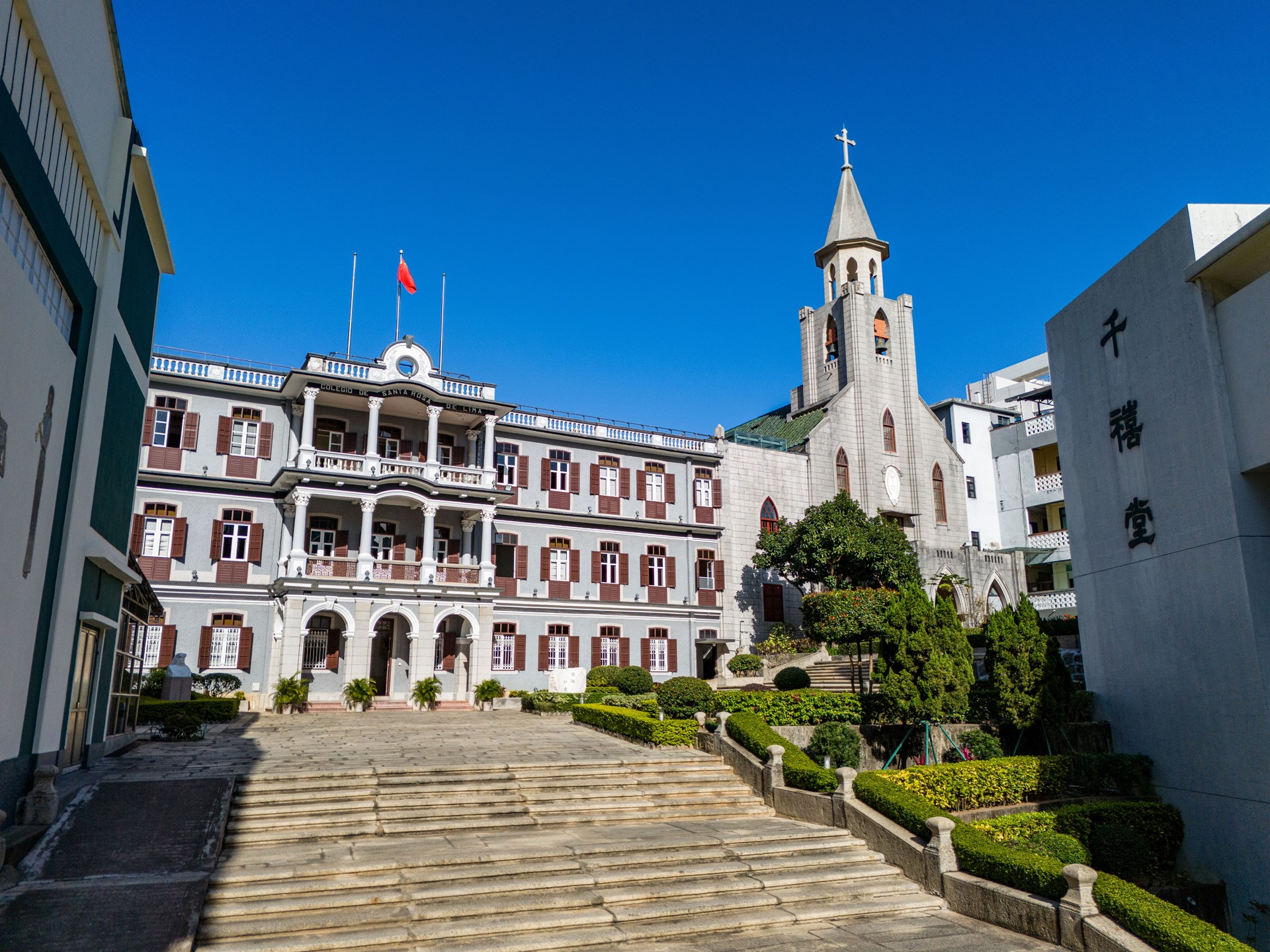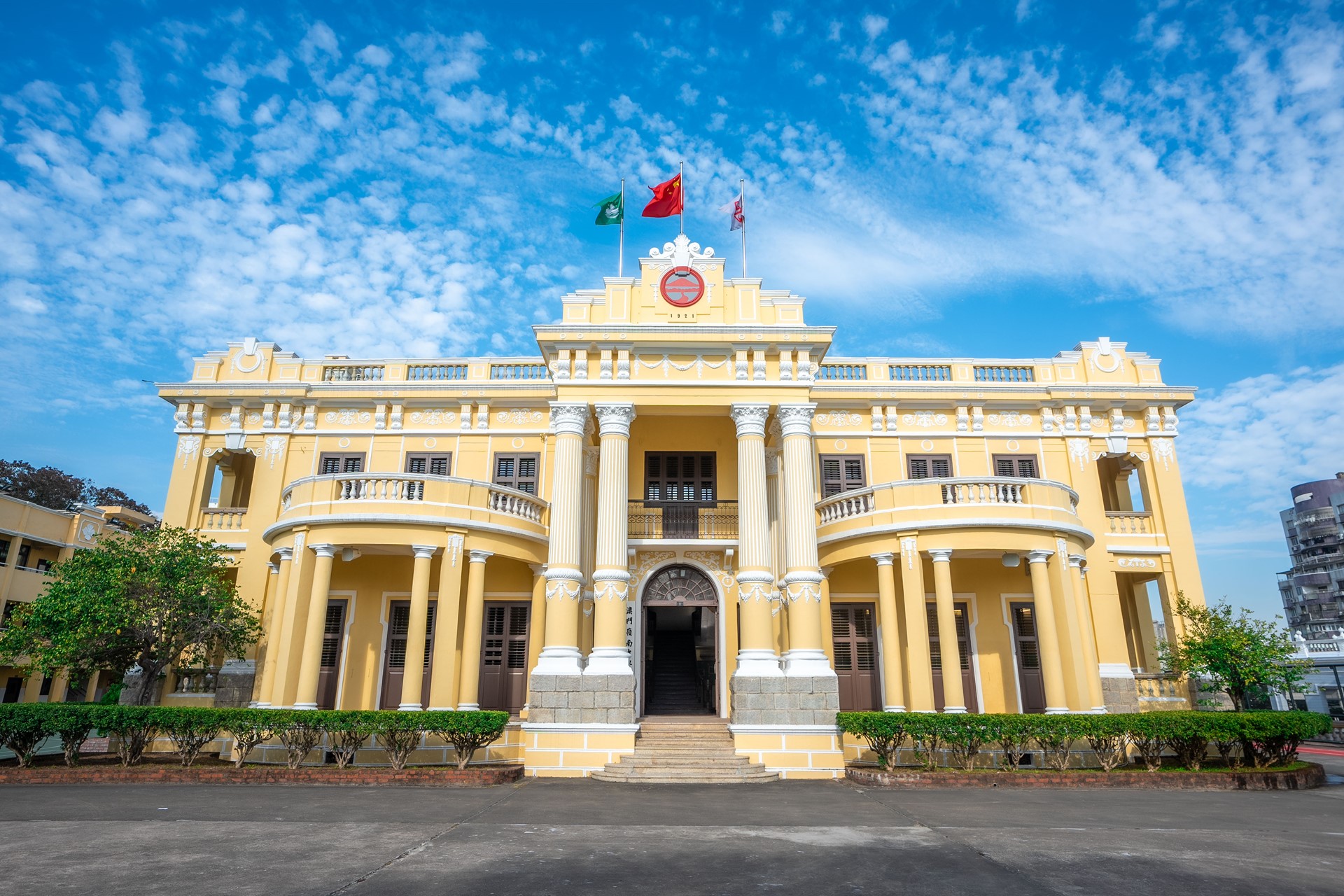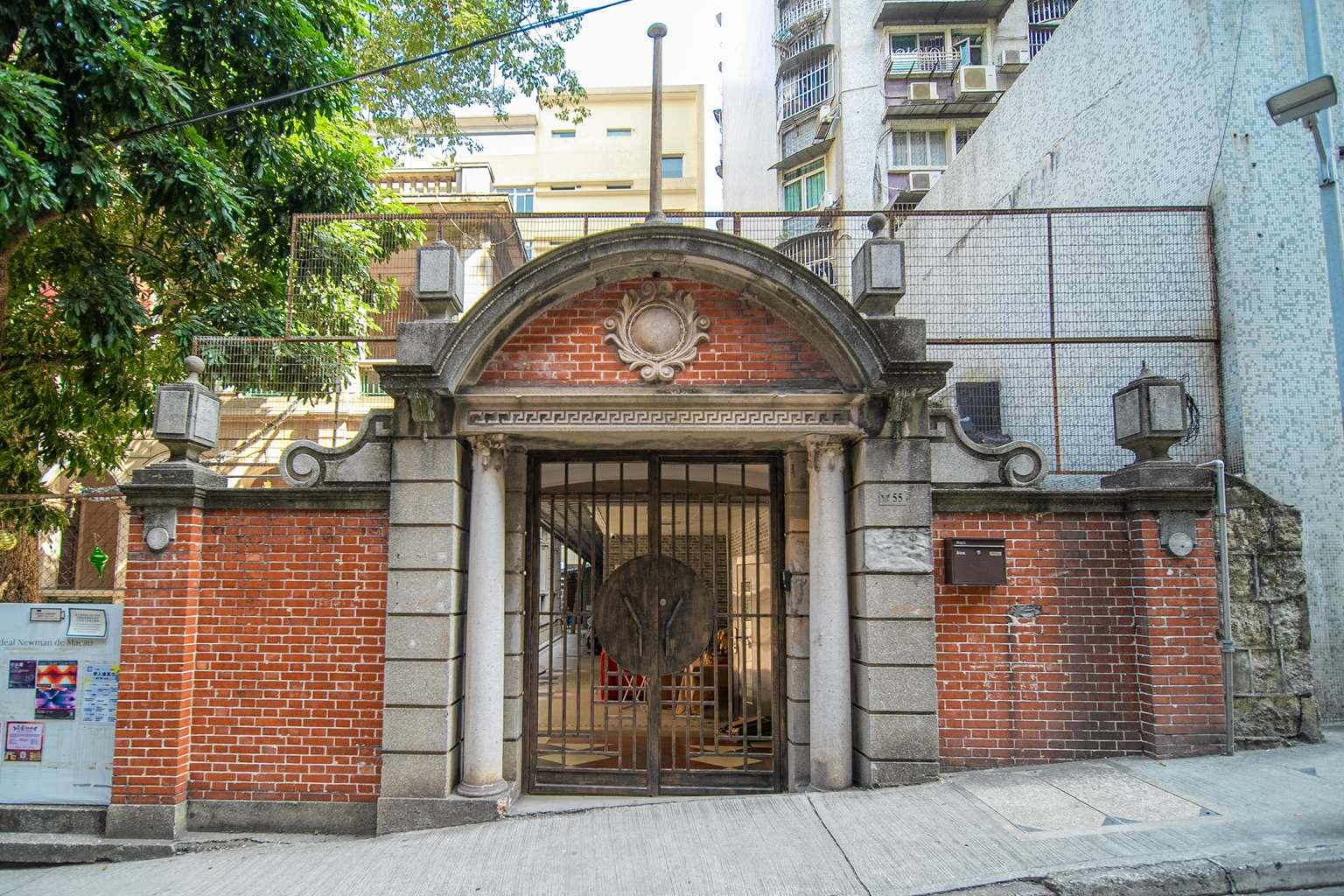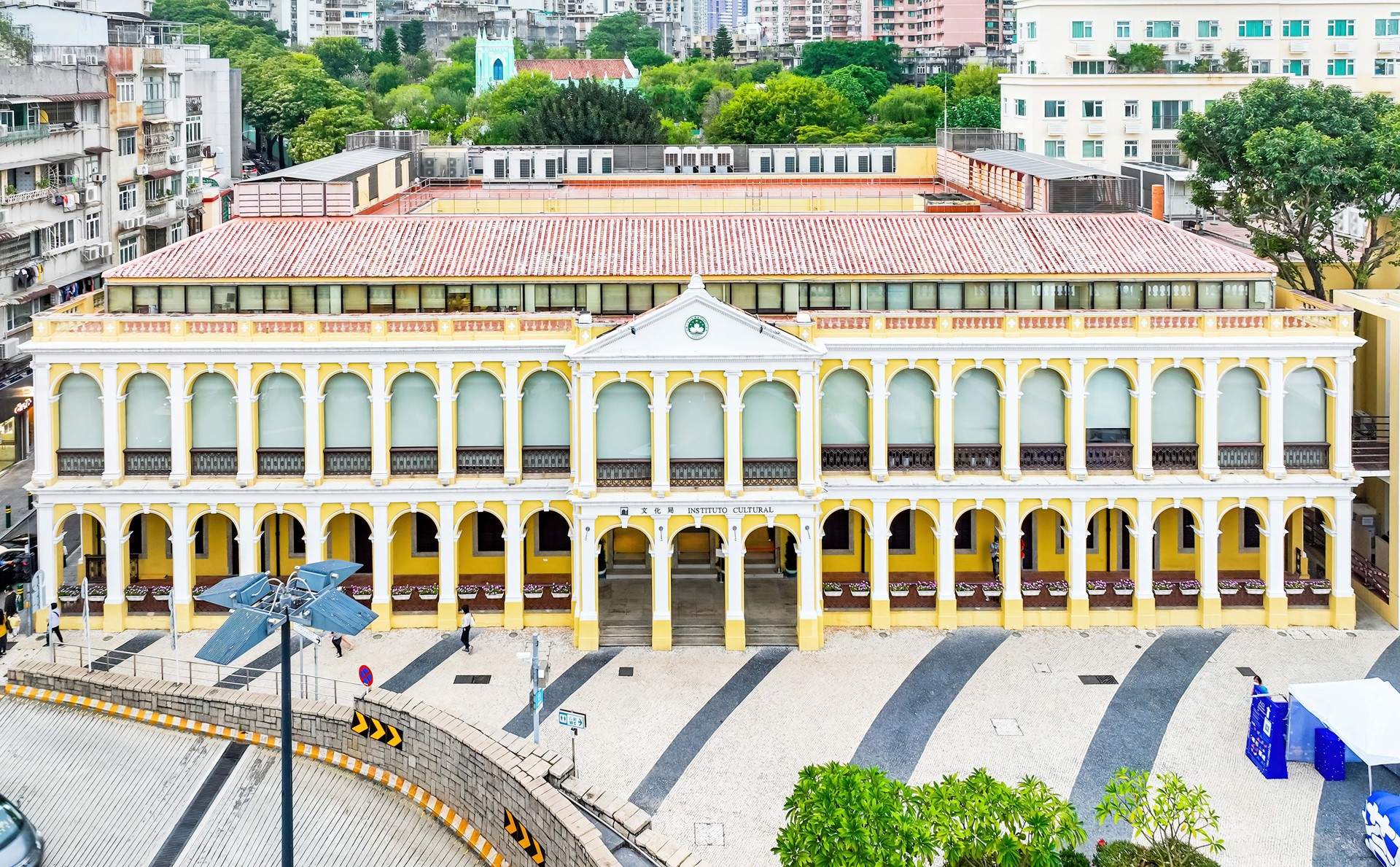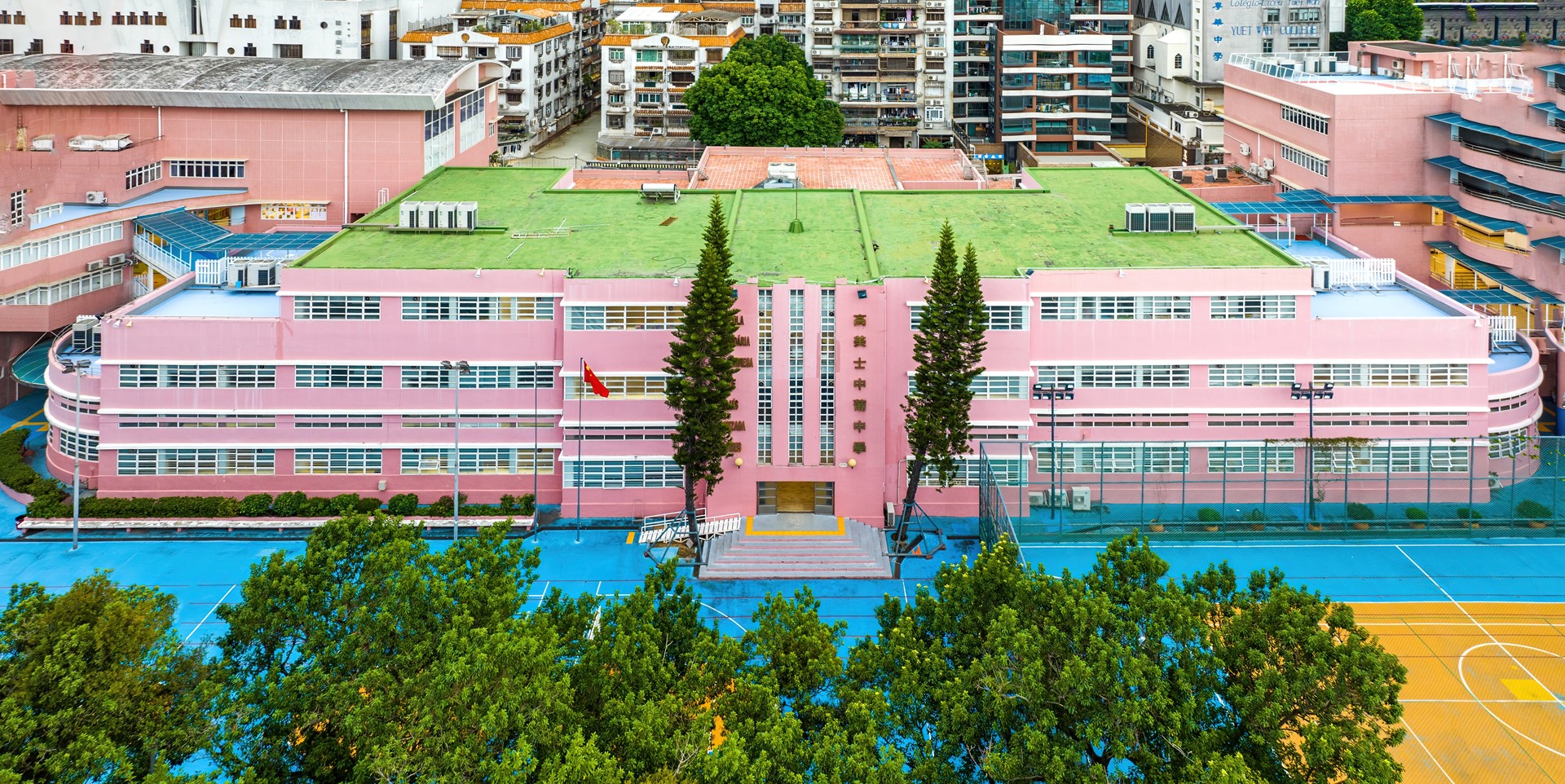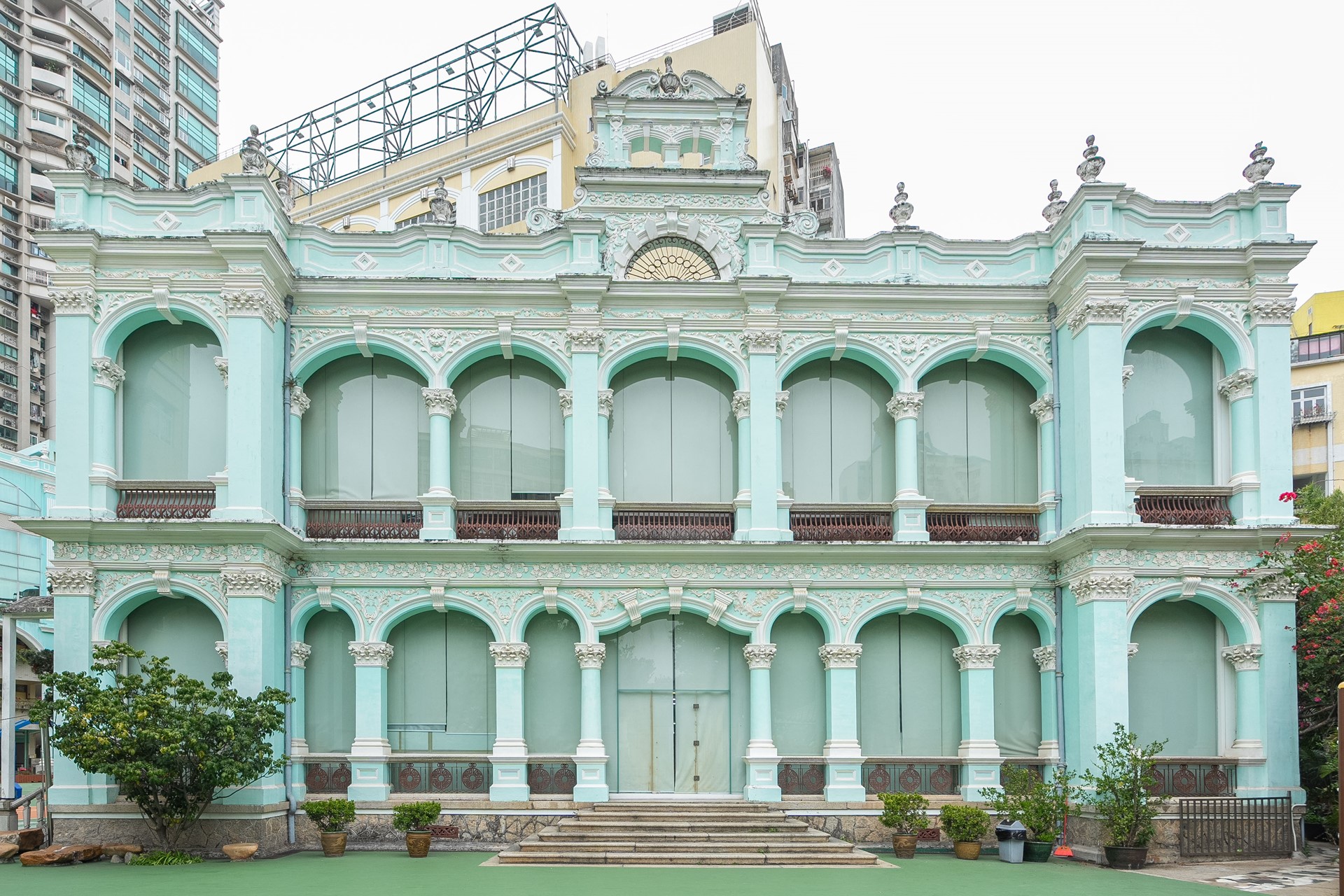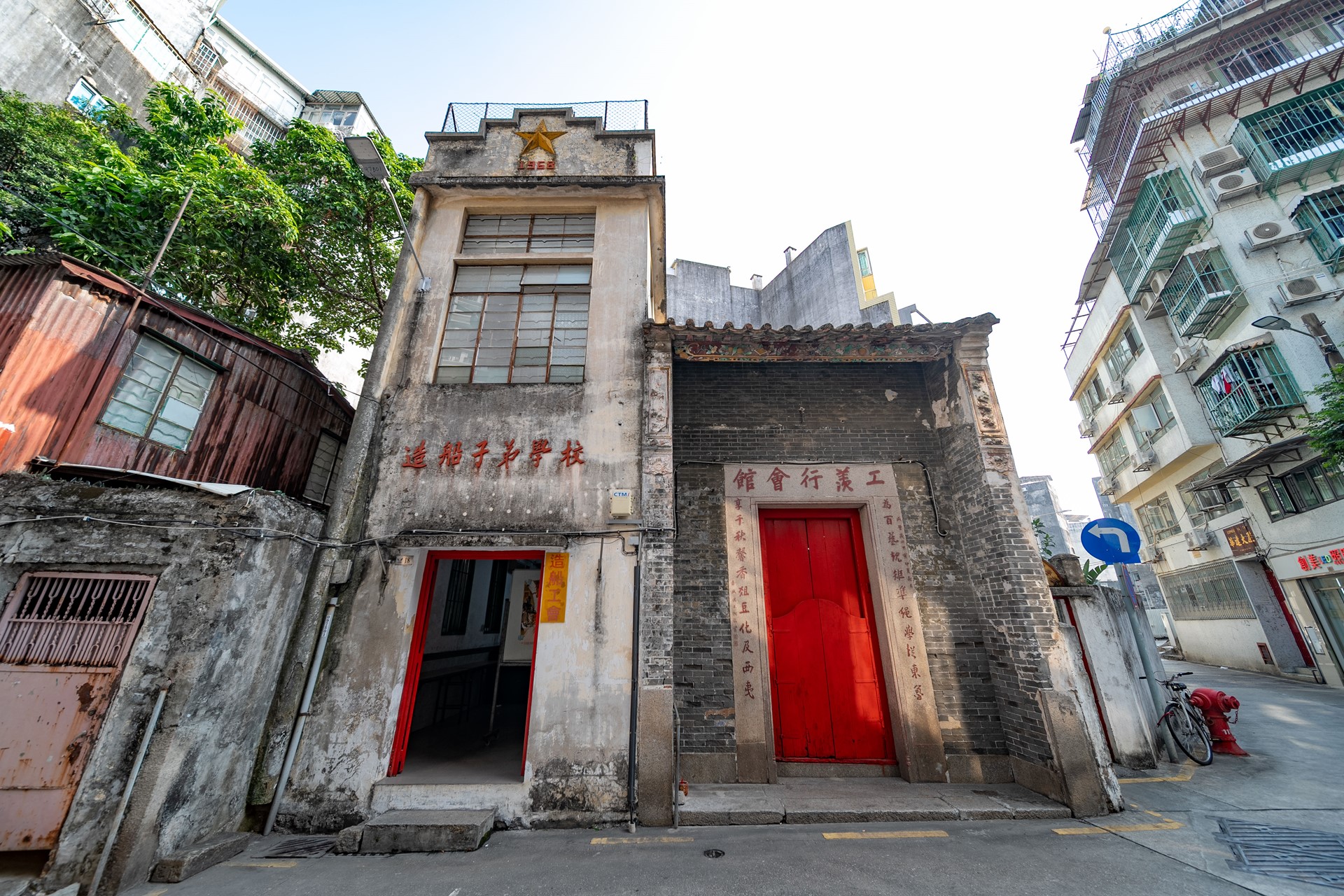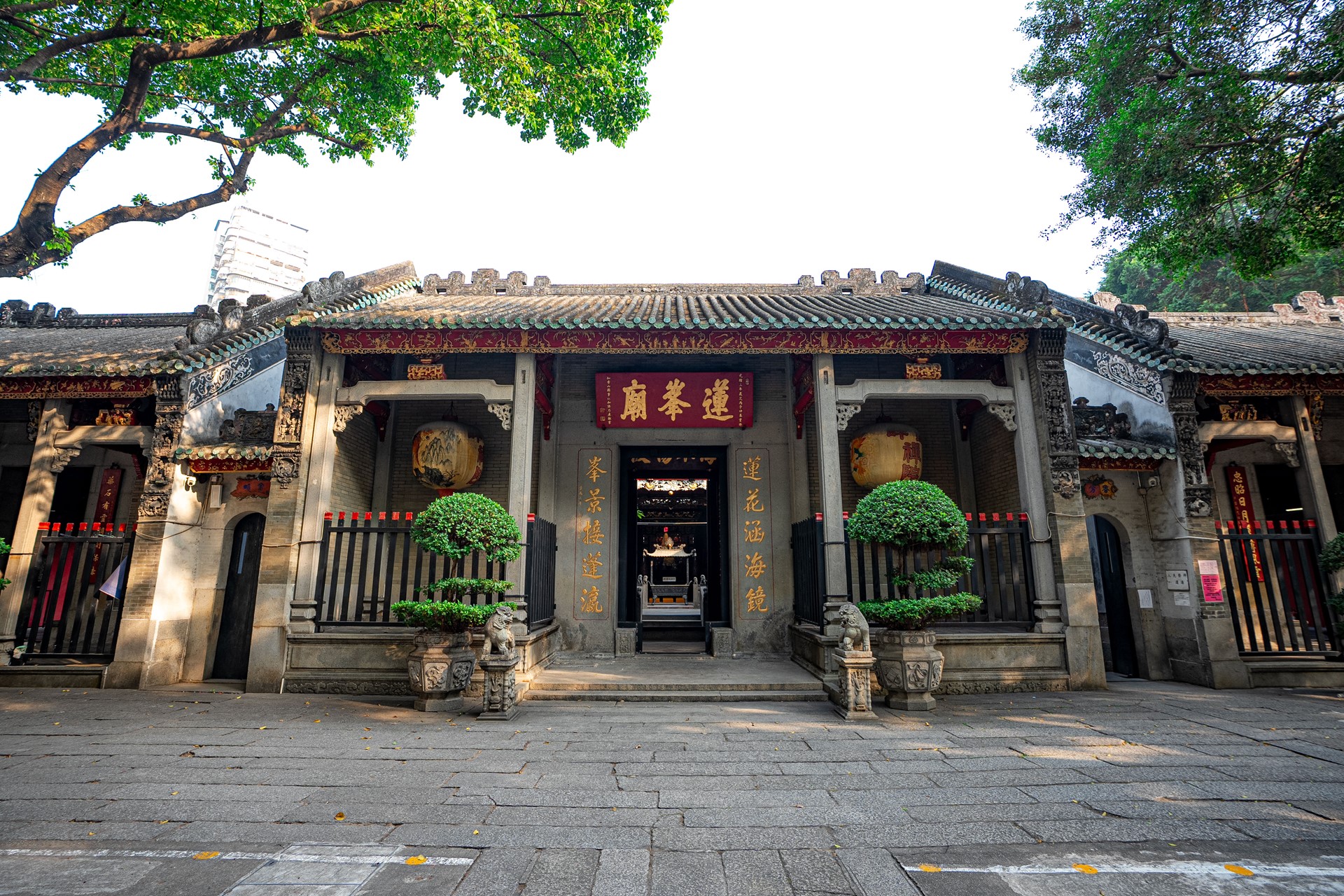Kong Tac Lam Temple is located on Rua de S. José. The exterior walls are painted in yellow clay color, giving it a simple and subdued appearance. One of the main founders, Master Guanben, secularly known as Zhang Shoubo, had been involved in the Constitutional Reform Movement, along with other reformers such as Kang Youwei and Liang Qichao. After the end of the Qing dynasty, he converted to Buddhism, and in 1915, he came to Macao and established a family Buddhist chanting hall, the precursor to Kong Tac Lam Temple.
Master Guanben was committed to using Buddhist education to promote social progress, especially in enhancing the social status of women and enlightening wisdom. In 1924, with the support of the community and the Buddhist sector, the master renovated the original hall and named it Kong Tac Lam. He also founded the first Buddhist institute for women in the Macao and Hong Kong region, which provided lectures for female Buddhists and a free school for girls from poor families. This initiative provided many women interested in Buddhism with opportunities to learn.
In 2023, the “Archives and Manuscripts of Macau Kong Tac Lam Temple (1645–1980)” were included into the UNESCO’s Memory of the World International Register. The temple houses over 6,000 precious documents covering many important historical materials from the late Ming and early Qing dynasties to the mid-20th century, demonstrating the temple’s significant contributions to the liberation and elevation of women's status, the development of the Sinicization of Buddhism, and the promotion of harmony among human beings.
Its Women's Buddhist institution pioneered female Buddhist education in the Lingnan region and inspired the founding of Hong Kong’s first Buddhist school, ‘Po Kok Girl’s Free School’. Kong Tac Lam Temple has had a profound impact on the spread of Buddhism in Macao, as well as women's education, and the promotion of gender equality.
